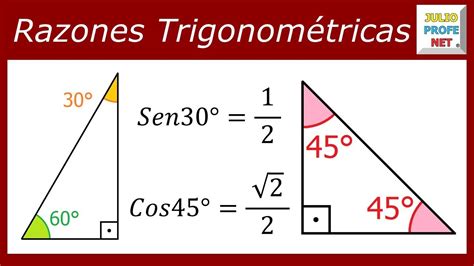Cuanto Es El 30 De 60
Kalali
Apr 03, 2025 · 4 min read

Table of Contents
What is 30% of 60? A Comprehensive Guide to Percentages
Calculating percentages is a fundamental skill in many aspects of life, from understanding sales discounts to analyzing financial data. This article will delve into how to calculate 30% of 60, exploring various methods and providing a deeper understanding of percentage calculations. We'll also look at practical applications and how to confidently tackle similar percentage problems.
Understanding Percentages:
Before jumping into the calculation, let's solidify our understanding of percentages. A percentage is a fraction or ratio expressed as a number out of 100. The symbol "%" represents "per cent," meaning "out of one hundred." For example, 30% means 30 out of 100, which can also be written as the fraction 30/100 or the decimal 0.3.
Method 1: Using the Fraction Method
This is arguably the most straightforward method. We can express 30% as a fraction: 30/100. To find 30% of 60, we simply multiply the fraction by 60:
(30/100) * 60 = 1800/100 = 18
Therefore, 30% of 60 is 18.
Method 2: Using Decimal Conversion
Converting the percentage to a decimal is another efficient approach. As mentioned earlier, 30% is equivalent to 0.3. Multiplying this decimal by 60 gives us the answer:
0.3 * 60 = 18
Again, we arrive at the answer: 30% of 60 is 18.
Method 3: Using Proportions
This method is particularly useful for understanding the underlying relationship between percentages and quantities. We can set up a proportion:
30/100 = x/60
Here, 'x' represents the value we're trying to find (30% of 60). To solve for 'x', we cross-multiply:
30 * 60 = 100 * x
1800 = 100x
x = 1800/100 = 18
So, once more, 30% of 60 is 18.
Method 4: Using the Percentage Calculator (for verification)
While the above methods are fundamental and crucial for understanding the concept, you can use online percentage calculators or built-in calculator functions on your computer or phone to verify your calculations. These tools are handy for quick calculations, especially in scenarios requiring multiple percentage calculations. However, it's highly recommended to understand the manual methods to build a strong foundation in mathematics.
Practical Applications of Percentage Calculations:
Understanding percentage calculations is essential in a variety of real-world scenarios, including:
-
Sales and Discounts: Determining the final price after a discount is a common application. For example, a 30% discount on a $60 item would result in a saving of $18 (as we've already calculated).
-
Taxes and Tips: Calculating sales tax or service tips involves percentage calculations. A 5% sales tax on a $60 purchase would be a simple application of this skill.
-
Financial Analysis: Percentage changes are used extensively in finance to track growth, losses, and other financial metrics. Analyzing profit margins, interest rates, and investment returns all rely on accurate percentage calculations.
-
Statistical Analysis: Percentages are critical for interpreting data in many fields, including science, healthcare, and market research. Representing data as percentages allows for easy comparison and interpretation.
-
Everyday Life: Percentage calculations can help with budgeting, comparing prices, and understanding proportions in recipes. Knowing how to calculate percentages helps you make informed decisions in your daily life.
Advanced Percentage Problems:
While finding 30% of 60 is relatively straightforward, let's explore more complex scenarios to further solidify your understanding. Consider these examples:
-
Finding the Original Value: If an item is discounted by 30% and the final price is $42, what was the original price? This requires working backward using the percentage calculation.
-
Calculating Percentage Increase or Decrease: If a value increases from 60 to 78, what is the percentage increase? This involves calculating the difference, dividing it by the original value, and multiplying by 100 to express it as a percentage.
-
Multiple Percentage Changes: Imagine a price increase of 10% followed by a 20% decrease. Calculating the final price after such sequential changes requires careful application of percentage calculations.
Mastering Percentage Calculations:
To become proficient in percentage calculations, focus on understanding the underlying concepts rather than simply memorizing formulas. Practice different methods, work through various examples, and use online resources or textbooks to further your learning. The more you practice, the more comfortable and confident you'll become.
Tips for Success:
- Practice regularly: Consistent practice is key to mastering any mathematical concept.
- Use different methods: Experiment with various methods to find what suits your learning style best.
- Verify your answers: Use a calculator or online tool to check your work and identify any errors.
- Break down complex problems: Divide complex problems into smaller, manageable steps.
- Seek help when needed: Don't hesitate to ask for help from teachers, tutors, or online communities if you encounter difficulties.
Conclusion:
Calculating 30% of 60 is a simple yet fundamental percentage problem with wide-ranging practical applications. By understanding the different methods, from fraction and decimal conversion to proportions, you can confidently tackle various percentage-related calculations. Mastering this skill will enhance your problem-solving abilities and provide a valuable tool for various aspects of your life, from personal finance to professional endeavors. Remember to practice regularly and don't be afraid to explore more challenging percentage problems to further hone your skills. The more you practice, the easier it will become!
Latest Posts
Latest Posts
-
Cuantos Son 68 Grados Fahrenheit En Centigrados
Apr 04, 2025
-
What Is A 4 Out Of 6
Apr 04, 2025
-
What Is 18 30 As A Percent
Apr 04, 2025
-
265 Out Of 300 As A Percentage
Apr 04, 2025
-
Whats A 17 Out Of 20
Apr 04, 2025
Related Post
Thank you for visiting our website which covers about Cuanto Es El 30 De 60 . We hope the information provided has been useful to you. Feel free to contact us if you have any questions or need further assistance. See you next time and don't miss to bookmark.
